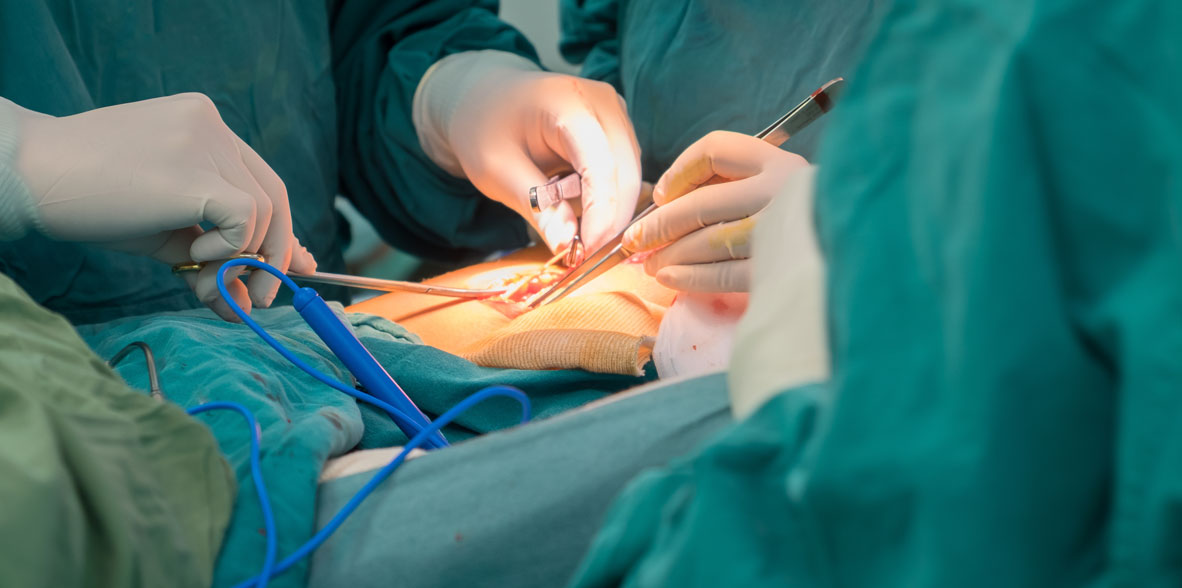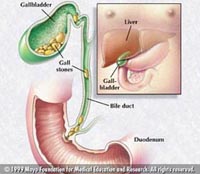

 Centro Médico Teknonen/health-centers/centro-medico-teknon
Centro Médico Teknonen/health-centers/centro-medico-teknon
A technique with great advantages

In the past, when your surgeon recommended gallbladder surgery, perhaps you thought about the experience of a family member or friend who had had this surgery years ago. These people had a large incision and had probably had a lot of pain after surgery. They were in the hospital for a week and did not return to normal activities for about six weeks. You may be worried about a similar experience. Perhaps you can't afford to be away from your job, and you're worried about not being fully functional at home for a month or more.
Today there is an innovative technique with great advantages. The medical name for this procedure is Laparoscopic Cholecystectomy. Today, most gallbladder surgeries are performed laparoscopically.
- Instead of an incision of 13 - 18 cm, the operation requires only four small openings in the abdomen.
- The patient usually has minimal postoperative pain.
- The patient usually experiences a faster recovery than patients operated with traditional gallbladder surgery. Most patients return home within a day and enjoy a quick return to normal activities.
- What is the gallbladder?
- The gallbladder is a pear-shaped organ that rests under the right side of the liver.
- Its main function is the collection and concentration of a digestive fluid (bile) produced by the liver. Bile is released by the gallbladder after eating, aiding digestion. Bile travels through thin tubes (bile duct) into the small intestine.
- In most patients the removal of the gallbladder is not associated with any damage to digestion
- What are the causes of gallbladder problems
- Gallbladder problems are usually caused by the presence of stones, which are small stones composed mainly of cholesterol and bile salts, and form in the gallbladder or bile duct.
- It is not known why some people form stones.
- There are no known measures to prevent stones.
- These stones can obstruct the outflow of bile from the gallbladder, causing inflammation and producing acute abdominal pain, vomiting, and occasionally, fever.
- If the stone obstructs the common bile duct, jaundice (yellowing of the skin) may occur
- How are these problems found and treated?
After the patient has symptoms or in asymptomatic patients:
- Abdominal ultrasound is the most commonly used method of finding stones.
- Stones are not expelled by themselves. Some may be temporarily managed with drugs or special diets, to stop fat absorption. This treatment has a short success rate and symptoms will continue until the gallbladder is removed.
- Surgical removal of the gallbladder is the most time-honored and safe treatment for gallbladder pathology
- Tips and reminders
- Dscontinue ASPIRIN and nonsteroidal anti-inflammatory drugs (e.g., Diclofenac, Piroxicam, Ketoprofen, Ibuprofen, etc.) prior to your surgery.
- If you have allergies, report it upon admission to the Clinic and remind your anesthesiologist.
- Upon entering the Clinic take the exams, x-rays, ultrasounds or other antecedents that have been requested as a preoperative study, in addition to the drugs or remedies that your doctor has indicated for chronic use.
- At the time of discharge, remember to keep your doctor's phone number in an accessible place and remember the office phone (932906434). The postoperative control will be carried out by your surgeon in the same consultation, request an appointment at the time of discharge
- Will I have a big scar?
Using laparoscopic techniques, the surgeon can avoid a large incision, leaving the patient with only about three or four small marks.
- Is laparoscopic gallbladder surgery safe?
Numerous medical studies show that the complication rate of laparoscopic gallbladder surgery is comparable to the complication rate of traditional gallbladder surgery when performed by a properly trained surgeon.
- Are there risks associated with laparoscopic cholecystectomy?
There are risks related to any kind of operation, the vast majority of laparoscopic cholecystectomy patients experience few or no complications, and quickly return to normal activities. It is important to remember that before undergoing any type of surgery (whether laparoscopic or open), you should ask your surgeon about his or her experience and training. The risks of laparoscopic cholecystectomy are lower than the risks of leaving a condition untreated. Complications of laparoscopic cholecystectomy are rare, but may include bleeding, infection, pneumonia, blood clots, or heart problems. An inadvertent injury to a surrounding structure such as the common bile duct or duodenum may occur and may require another procedure to repair it. Bile leaks into the abdomen from the ducts that carry bile from the liver to the duodenum have been described.
- What happens after gallbladder surgery?
- Gallbladder removal is major abdominal surgery and you may feel a certain amount of pain. Nausea and vomiting are not uncommon.
- Once fluids or diet are tolerated, patients leave the hospital or clinic on or the next day of laparoscopic gallbladder surgery.
- The activity depends on how the patient feels. Walking is advised. Patients can remove their bandages and bathe the day after surgery.
- Patients will likely be able to return to normal activities within a week, including driving, climbing stairs, light lifting, and working.
- In general, recovery is progressive from the time the patient returns home.
- The presence of fever, yellowing of the eyes or skin, worsening of abdominal pain, bloating, nausea and persistent vomiting, or drainage from any of the wounds are indications that some complication may have occurred. You should contact your surgeon in these circumstances.
- You can request a follow-up appointment seven days after surgery (one week) after surgery, even if your postoperative period has gone smoothly
- Is laparoscopic gallbladder removal right for me?
Although there are many advantages of laparoscopy, the procedure may not be appropriate for some patients who have had previous abdominal surgeries or who have a previous medical condition. Through an evaluation by your surgeon it can be determined if laparoscopic removal of the gallbladder is appropriate for you.
- What preparation does it require?
- Before surgery, you must fasten for at least 6 hours.
- You should bathe the night before or the morning of surgery.
- If you have difficulty with your bowel movements, an enema or similar preparation may be used after consulting with your surgeon.
- Some preparatory examination may be required according to your medical condition.
- If you take any medication daily, discuss with your surgeon whether he or she would like you to take any medication on the morning of surgery with a sip of water. If you take aspirin, blood anticoagulant medication or arthritis medication, you need to discuss with your surgeon the appropriate time to stop these drugs before surgery.



































